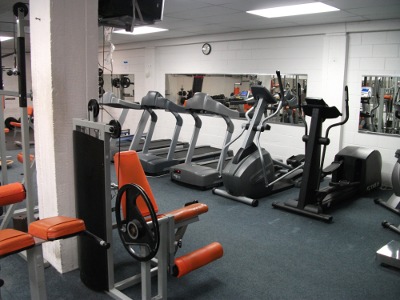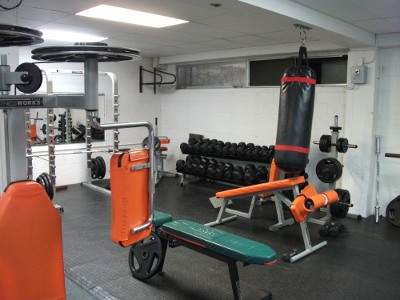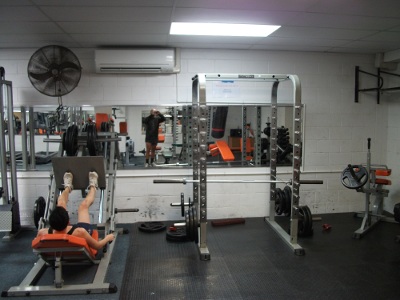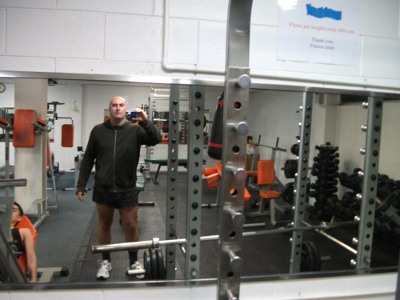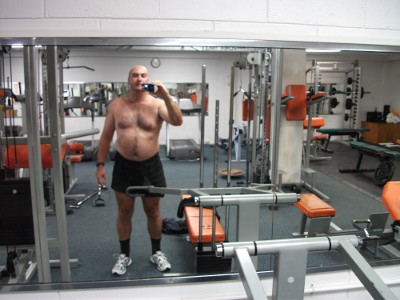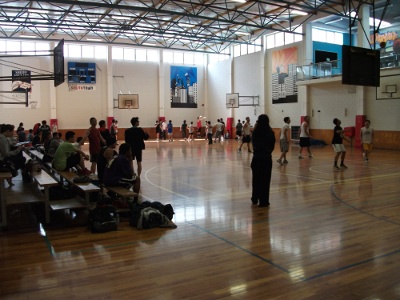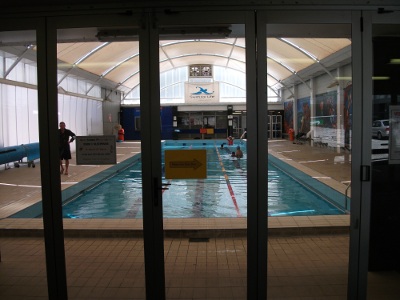Archive for the ‘BodyBuilding’ Category
A Safe Natural & Legal Anabolic Steroid Formula
Who ever would have thought there was such a thing. A legal safe & natural anabolic formula. Well I’m sure if you read my last three posts but had never considered these things before you may think I’m Fubar.
For starters you only want to take this stuff if you are over 35-40
Unlike synthetic steroids the side affects of this stuff are largely healthy. Some of the ingredients are even pretty easy to come by for free. If you buy in bulk you can get a years supply for under $400.
Is it a real anabolic steroid ? YES in fact if you take too much or use it for too long your gonads will shut down. That and any associated problems are in fact the only negative side affect I am aware of.
If you use it carefully in the right amounts testicular shut down wont occur.
This stuff is legal because it is non toxic and medicinal. Unlike steroids it does not create poisonous by products in the body. What it has that steroids don’t have is is dozens of bioactive health giving substances which I wont bother to list. The information is easy to find online.
Here is my formula for a tincture to prevent andropause related hormone problems for men over 40.
With the exception of the antler this can be attributed to the book “Natural Testosterone Solution”
Testosterone & Growth factor Tincture – daily dose
Tienchi Ginseng : 1/3 teaspoon x3 per day
Pine Pollen tincture : 1 teaspoon per day
Nettle Root : 1200 mg per day
Tribulus : 500 mg per day
Panax Ginseng : 1/4 teaspoon per day
Siberian Ginseng : 1 teaspoon x2 per day
The above formula can be taken daily indefinitely
To be cycled 3 weeks on 1 week off …
Pantocrine – deer antler extract : 4-10 droppers per day depending on your weight
I recommend you make your own pantocrine by tincturing antler slices with everclear or bacadi 151 & distilled water.
Should women take this – absolutely not
Should teens & young adults take this – no
Should you consult your physician for hormonal blood monitoring – yes and for hematocrit levels too
The antler is the more potent tincture by far – hence the cycle. On the other hand the subtlety of the pollen tincture is its strength
If you are curious the antler has resulted in 300% increases in testosterone in some studies – appropriate anti-aromatase will be required to prevent it converting to oestrogen
Pine pollen tincture can cause testicular shut down when used in dosages of 1/4 cup daily
VELVET ANTLER: 2000 YEARS OF SCIENTIFIC TRADITION
This post is taken from http://www.clearstone-elk.com/research.html
Abstract
Scientists are now proving what oriental tradition has known for more than 2000 years, deer velvet antler is good for you. Velvet antler has been one of the most prized health tonics in traditional oriental medicine for over 2000 years. Today, in addition to its FDA supported use for arthritis treatment and its’ proven enhancement of athletic performance, velvet antler’s bioactivity probably has undiscovered medical potential for humans with regards to boosting immunity, preventing illness, and propagating longevity.
Pharmacological efficacy
Velvet antler is named for the soft growing antler tissue which is cast off and re-grown every year by Cervus or deer. Because of its’ rapid growth rate, velvet antler is a complex substance with unique bioactive properties. Chinese and Korean historical literature describes the efficacy of velvet antler as a preventative medicine in the quest for health; velvet antler figures prominently as a holistic medicine which has tonic effects on health and well-being of men, women, and children (Brekhman 1980).
Since the earliest velvet antler research, in Russia in the 1930s, scientists and pharmacists have attempted to provide sound scientific reasoning for it’s purported therapeutic effects. As a result, over 250 articles have been published on the biochemical composition and pharmacological effects of velvet antler. Today, scientific theory, empirical evidence and clinical research supports the notion that velvet antler may amplify the body’s metabolism in general, assist immune and phagocytic functions, preserve and renew tissues (accelerating growth and healing), ameliorate both gonadotropic and thyroid function and have positive cardiovascular benefits (Church, 1999).
This pharmacological activity is highly correlated with several of velvet antler’s bioactive components. Velvet antler is composed of an aggregate of distinct cell types including fibroblasts, chondroblasts, chondrocytes, and osteocytes (Banks and Newberry 1982). In fact, velvet antler is an extraordinary storehouse of nutrients our bodies need including collagen consisting of glycine, alanine, proline and hydroxyproline; proteins including branched-chain amino acids isoleucine, leucine and valine; plus, alanine, arginine, cysteine, glutamic acid, glycine, histidine, lysine, methionine, phenylalanine, proline, serine, spartic acid, threonine, tryptophan and tyrosine; proteoglycans; glucosaminoglycans including N-Acetyl-glucosamine, chondroitin sulfate A, dermatan sulfate, keratin sulfate and hyaluronic acid; androgens; estrogens; growth hormones IGF-1, IGF-2, & TGF (Transforming Growth Factor); polyamines; mucopolysaccharides; phospholipids including omega-6 fatty acid; prostaglandins; nucleotides; monoamine-oxidase inhibitors, hematopoietin; ectosaponins; erythropoietin; gangliosides; and high in minerals Ca, P, Fe, Mg and Zn (Sunwoo 1996).
Reported pharmacological effects
stimulating and tonic effects
accelerated cell recovery and renewal
growth-stimulating effects
androgenic/gonadotropic effects
anti-inflammation effects
anti-arthritis effects
anti-stress effects
anti-tumor effects
cardiovascular effects (anti-cholesterol, haemotopoietic, hypotensive)
Reported biochemical composition
lipids (omega-6 fatty acid)
polysaccharides
polyamines
all essential amino acids
high in Ca, P, Fe, Mg and Zn
collagen I, II, IIB and X
proteoglycans
glycosaminoglycans (GAGs)
prostaglandins
growth factors IGF-1, IGF-2, TGF
nucleotides
gangliosides
monoamine-oxidase inhibitors
While the therapeutic claims for velvet antler in traditional medicine are extraordinarily wide ranging, the fact that velvet antler is still in use today, after 2000 years, is a testimony in itself – velvet antler works! Certainly, a more scientific understanding of the bioactive components of velvet antler is necessary to define the nature of their effects. But, with over 70 years of research, new insights and more studies, velvet antler is “poised to be one of the most versatile multipurpose natural remedies to arrive in the West” (Life Extension Magazine). As the New Zealand Game Industry Board stated: “With the results expected from new scientific research, it is likely that velvet will become as accepted in western countries as vitamins and minerals.” Obviously, with past proven effects and future forecasted results, the potential applications of velvet antler in Western natural medicine and health care are, in fact, scientifically significant…
VELVET ANTLER AND THE NEXT 2000 YEARS
In a new millennium of supplement trends and designer foods fads, another “brand new”, “next best” and “must have” nutriceutical may justly receive some skepticism. Perhaps there is some validity to a 2000 year old “brand new, next best, must have” completely natural, prized health tonics of traditional oriental medicine.
Seemingly, velvet antler acts as an adaptogen in the body; it adapts to the bodies deficiencies to provide the raw material for the body to attain optimum health: a nontoxic, non-habit forming nutrient. Research so far supports a therapeutic role for velvet antler in a number of conditions. The FDA has supported velvet antler use for arthritis treatment, numerous experiments have shown it enhances athletic performance and research suggests significant clinical implications to the entire system including the immune system, the cardiovascular system, and the nervous system. Dr. David Gerrard, sports physician associated with Otago University, the New Zealand Game Industry Board (NAGIB) and Velvet Antler Research New Zealand (VARNZ) Ltd., believes “early velvet antler experimental results are a good start, and warrant more research having just scratched the surface of the subject.” For example, new studies are showing many interim responses to velvet antler such as wound healing effects, decreasing body fat effects and anti-aging effects. Although, more scientific understanding is necessary to define that nature of velvet antler’s bioactive components and their independent and synergistic effects in animal systems. The research, though considerably complex, is likely to be very rewarding: velvet antler’s rejuvenative and tonic actions may benefit athletes, the elderly and disease patients alike. If it is true that “time will tell”, velvet antler speaks volumes from the past that echo into the future.
CARTILAGE, JOINT AND ARTHRITIC BENEFITS OF VELVET ANTLER
In 1999, velvet antler was scientifically substantiated, by research and clinical studies, in compliance with FDA regulations, “to support healthy joint structure and function”. In fact, velvet antler, as treatment for arthritic conditions, is of increasing interest to physicians and pharmacists. The bioactive substances contained in velvet antler, namely collagen, glycosaminoglycans (GAGs), prostaglandins and pantocrin seem to work synergistically and dependantly with other velvet antler cofactors to produce arthritic relief beyond that seen with any individual substance. Velvet antler is a case of the whole being greater than the parts.
Collagen
Velvet antler is antler in its cartilaginous stage. Collagen is a primary component of cartilage, responsible for about half of the dry weight of cartilage. (Yasui and Nimni, 1988.) Type II collagen primarily forms cartilaginous velvet antler. Type II collagen seemingly assists T-cell production of T-helper cell- inhibiting cytokines to decrease inflammation of joints (Kalden and Sieper, 1998). Particular cartilaginous degenerative conditions such as osteoarthritis (OA) and rheumatoid arthritis (RA) are attributed to alterations in collagen type II synthesis. As an auto-antigen, type II collagen exerts significant effects when given to RA patients (Trentham et al., 1994). Type II collagen is also significant in the treatment of juvenile rheumatoid arthritis (JVA): after 3 months of therapy, 8 of 10 patients given oral type II collagen had less pain, less swelling and stiffness, with increased grip strength and ambulatory endurance (Barnett et al., 1996).
GAGs
GAGs are acidic polysaccharides composed of repeating units of amino sugar, primarily glucosamine and uronic acid. The most prominent GAG in velvet antler tissue is chondroitin sulfate with small amounts of keratin sulfate, dermatan sulfate and hyaluronic acid (Sunwoo et al. 1997). Research back in 1988 established that chondroitin sulfate is an extremely potent anti- inflammatory agent. Oral chondroitin sulfate has demonstrated gradual reduction in clinical symptoms of OA superior to those attained with traditional NSAIDs without associated side effects and having a lasting effect up to three months post termination of supplementation (Morreal et al., 1996). Chondroitin and glucosamine are used today by patients who have arthritis, with excellent results (Sim and Sun-woo, 1998). Hyaluronic acid also has anti-inflammatory and analgesic properties as well as promoting anabolic behaviour in chondrocytes. Hyaluronic acid decreases in the synovial fluid of OA patients where reversing this abnormality through supplementation provides relief and repair of damaged joint cartilage (McCarthy 1998).
Prostaglandins
Prostaglandins and pantocrin are substances with varying physiologic effects. Velvet antler prostaglandins and pantocrin can act as a natural anti-inflammatory and may assist its capacity to reduce the swelling associated with arthritis (Church, 1999).
In light of the collagen, GAG, prostaglandin and pantocrin research and their high concentrations in quality velvet antler, velvet antler has received scientific substantiation as dietary supplement for the support of healthy joint function. Even if you do not have arthritis measurable changes occur in joint cartilage by the age of thirty, worsening with age. As such, it makes sense to use velvet antler as a nutritive supplement for its wholistic and superior chondroprotecting and anti-inflammatory benefits: it’s a simple case of an ounce of prevention!
IMMUNE SYSTEM BENEFITS OF VELVET ANTLER
Traditionally, velvet is used in Asia as a nourishing tonic before winter to prevent illness. There is extensive anecdotal evidence of velvet antler’s effectiveness to prevent sickness, but recent scientific evidence is verifying its immune system benefits.
Immuno-stimulant
Velvet antler has been scientifically determined to have significant immune stimulant activity. Velvet antler supplementation in mice and rats reportedly increased monocytes, phagocytes, and leukocytes which serve to enhance immune function (Church, 1999). Mice given velvet antler pantocrin extract were shown to enhance phagocytosis and immunoglobulin levels resulting in significant immune stimulant benefits (Wang 1996). Velvet antler was also shown to increased production of human white blood cells; this response, or immunopotentiation, strengthens the body’s own immune system mechanism to fight disease and infection (Suttie et al. 1996).
Immuno-compliment
There are many conditions, such as cancer or AIDS, where boosting the body’s immune system would improve results of remedial treatments. Science strongly indicates that velvet antler’s immunopotentiation supports other treatments of disease. For example, velvet antler extracts slow tumor growth and demonstrate anti-tumor activity against Bacillus P-92, a tumor cell line, in mice (Suttie et al., 1994). Also, fermented velvet antler increases the survival rate of mice that have tumors, from 25-40% (Church, 1999).
Presently, research is being undertaken in Korea showing velvet antler’s effectiveness when used to build up the strength and resilience of patients undergoing cancer treatment. Although the mode of action is not entirely determined it is believed velvet antler not only enhances the immune system but also suppresses the cancerous growth in a manner similar to shark cartilage. It is suggested that velvet antler selectively destroys blood vessels of cancerous cells constraining cancerous propagation by limiting its nutrients. Secondly, it is suggested that velvet antler may limit the destruction of healthy tissue around cancerous cells constraining cancerous propagation by limiting the space in which it can grow.
Velvet antler is also undergoing studies as an immune enhancer for patients with HIV, at the Institute for Traditional Medicine in California, with positive preliminary findings.
Velvet antler is proving to be a preventative and supportive medical treatment. Even at the lowest dilution, immune enhancement effects of velvet antler were observed. (Suttie et al. 1996). Velvet antler has many positive effects on the body’s immune system and in the treatment of a range of illnesses and conditions. Further research is required to confirm these preliminary findings, but seemingly, velvet antler is a booster shot of immunity!
ANTI-STRESS, ANTI-FATIGUE AND ANTI-DEPRESSION BENEFITS OF VELVET ANTLER
Velvet antler has been demonstrated to prevent or reduce many of the symptoms of a hectic lifestyle or chronic over-training including stress, fatigue, and depression.
Anti-stress
Velvet antler demonstrates an ability to prevent or reduce cardiovascular stress. A Japanese study in which 8 out of 10 patients received velvet antler pantocrin resulted in significant and transient reductions in arterial blood pressure. The researchers concluded that pantocrin acted directly on blood vessels and on the parasympathetic nervous system to lower arterial blood pressure (Fisher et al., 1998). In biochemical studies conducted at the Oriental Medicine Research Center of the Kitasato Institute in Tokyo, Japan, polysaccharides have been identified in velvet antler that increase HDL (desirable) cholesterol, thin the blood and reduce clotting contributing to improved circulation.
Velvet antler’s positive effects on the cardiovascular system can aid in anemia, reduce arterial blood pressure, improve circulation, decrease risk of stroke, and decrease risk of cardiovascular disease and reduce cardiovascular stress in general (Fennessy 1991); (Fisher et al., I 998); (Zhao et al. 1992).
Anti-fatigue
For centuries velvet antler has been used for combating the symptoms of fatigue and revitalizing the entire system. Fulder (1980) proposed a general theory to explain the anti-fatigue effect of velvet antler. He suggested “anti- fatigue substances” which include pantocrin, have a biologically active component called glycosides. Fulder proposes that the primary site of action of the glycosides is the hypothalamus and the pituitary gland causing release of natural revitalizing substances.
Also the haematopoietic effects of velvet antler, demonstrated in numerous experiments, stimulate red blood cell synthesis and increase erythropoietic activity (Sim et al. 1995). Such erythropoietic activity may well be responsible for the stamina-improving, energizing effects of velvet antler as seen in endurance runners (Brekhman et al. 1969).
Anti-depression
Irritability or depression are believed to be caused by depressed levels of dopamine, seratonin, norepinephrine, acetylcholine, and other neurotransmitters in the brain. Studies report velvet antler prevents the breakdown of these neurotransmitters prolonging their availability to the brain (Chen et al. 1992). Much like the popular supplement St John’s Wort, velvet antler has an inhibitory effect on monoamine-oxidase activity which prolongs the availability of beneficial neurotramitters resulting in enhanced mood, energy, and well being.
Stress, fatigue and depression are the anti-productive results of daily living and training. Velvet antler supplementation can be a pro-active defense against these health antagonists!
MUSCULAR, ATHLETIC AND PERFORMANCE BENEFITS OF VELVET ANTLER
Research has demonstrated that velvet antler has beneficial effects on muscle strength, muscle endurance, and muscle recovery. There is ample scientific evidence from a number of studies revealing such effects in both animals and humans. It has been suggested that velvet antler composition including insulin-like growth factor-I (IGF-l), growth hormone (GH) precursors, and pantocrin work individually and synergistically to enhance muscle composition, exertional stamina and training recovery time.
IGF-l
It has been postulated that velvet antler may be a valuable source of unrefined IGF-l that can improve muscular development (Fennessy, P F 1991). While these findings require further elucidation, the implications could have very important benefits indeed…
IGF-l levels decline steadily in humans from the age of 25, with detrimental effects on muscle tissue, muscle strength, and muscle function. Restoring IGF-1 levels has enormous anabolic potential limited only by amino acid supply within muscle cells (Fryburg DA, 1995 and Murphy MG, 1998) . Furthermore, from IGF-1 your body restores other hormones it is lacking such as DHEA, Melatonin, Testosterone, Estrogen and Progesterone to normal individual levels. Unfortunately, simply elevating serum levels of free-form IGF-1 has not proven to be anabolic nor practical in healthy individuals (Yarasheski KE, 1992 and 1993 and Deyssig R, 1998).
But, feasibility studies using unrefined IGF-l show promising results. Unrefined IGF-l is bound to its binding protein-3 (BP3); BP3 appears to regulate the release of IGF-I to target tissue sites and to prevent IGF-1 from being cleared from the system. This IGFBP3 unit seems to be a necessary part of the existing anabolic system which uses the binding protein to release the IGF-1 when and where it is needed extending IGF-1’s half-life and muscle building activity from minutes to hours.
These optimistic results suggest velvet antler biochemistry may contribute to restoring natural hormone levels as one ages; plus, boost muscle strength and growth without using synthetic steroids or other artificial chemicals.
GH precursors
The decline of GH with age is directly associated with many symptoms of aging, including wrinkling, gray hair, decreased energy and sexual function, increased body fat, osteoporosis and more. Clinical evidence demonstrates that by replacing GH these symptoms are reversed to restore hair color and growth, increase energy, significantly reduce body fat, regain bone tissue, plus a score of other health benefits. Natural secretagogues (GH precursors) may be the best hope for raising growth hormone in an entirely physiologic manner.
Elk velvet antler contains significant concentrations of GH precursors (Fisher et al., 1998) which may stimulate the endocrine system to release natural growth hormone. Chemical analysis of velvet antler reveal notable GH secretagogues such as branched-chain amino acids (BCAA) isoleucine, leucine and valine; plus, glycine and several minerals including zinc and magnesium (Sunwoo 1996).
Amino acids have long been reported to produce significant increases in the circulating GH levels. BCAAs, considered the most important amino acids for sports performance, act as an anabolic (muscle-building) agent. A study in the International Journal of Sports Medicine, showed BCAAs potentiated GH levels and increase fat loss during dieting. Several other reports have indicated that even small amounts of glycine increased strength by stimulating the release of GH (Kasai et al. 1980). In one study 6.75 grams of glycine taken orally, increased GH levels four-fold. In another study, by Brakeman and Pfeiffer (1986), male subjects given 30 grams of glycine orally over a two week period increased GH levels by ten-fold.
In addition, studies indicate supplementing with zinc and magnesium can potentiate GH effect on tissue healing, tissue repair, and muscle growth (Fennessy 1991).
Considering the many pathways velvet antler may increase GH, velvet antler may be considered a natural “stacking” agent. That is, velvet antler may pack the right nutrients in the right proportions so to derive synergistic and optimal benefits- a true panacea for GH release.
Testosterone stimulators
Testosterone’s muscle building effects are well known by scientists. In a study by Dr. Gilbert Forbes and colleagues (1992) normal subjects gained an average of 16.5 lbs of lean body mass in 12 weeks of testosterone supplementation. Velvet antler supplementation was shown to significantly increase (five to six times) blood plasma testosterone levels (Fisher et al. 1998). It is suggested the performance enhancement effects of velvet antler are partly the result of this gonadotropic effect (Church 1999).
Although there is considerable evidence for the gonadotropic effects of velvet antler (Fennessy 1991), it is not yet fully known how velvet antler causes increase in testosterone. Velvet antler may mimic or stimulate hormonal action in a number of different places. Firstly, velvet antler has a positive effect on the male hypothalamus resulting in a increase in natural testosterone. Secondly, it is postulated that velvet antler BCAAs may stimulate testosterone release in male Leydig cells in the testes (Fisher et al. 1998). Lastly, studies indicate zinc and magnesium, as found in velvet antler, prime natural testosterone production improving the gonadotropic effects of velvet antler.
The finding that velvet antler naturally boosts testosterone production in the body is a very exciting development. Velvet antler may become the next popular body building supplement akin to creatine monohydrate, tribulus terrestris, or prohormones; velvet antler may become the supplement of choice for both athletes and aging males to increase natural testosterone levels.
Pantocrin et al.
Pantocrin was observed in the late 1960s to have a positive effect on the endurance of laboratory animals. Pantocrin extracts increased the working capacity of mice (Brekhman et al., 1969), and these early findings led to experiments designed to study the effects of pantocrin on athletes.
In one study in Russia, subjects were given either pantocrin or rantocrine (reindeer antler). The control group exhibited 15kg/m of dynamic work potential, athletes given pantocrin exhibited 74kg/m dynamic work potential, and those given rantocrine exhibited 103kg/m dynamic work potential (Yudin and Dubryakov, 1974). In a like manner, the athletic performance in a 3000m run was enhanced following pantocrin administration (Breckhman et al. 1969).
Early theorists suggested pantocrin and other naturally occurring substances in velvet antler served to accelerate the body’s natural restorative processes following physical, external, or biochemical challenge (Fulder, 1980). Today, it is suggested velvet antler’s adaptogenic properties combined with its anti- inflammatory effects (Zhang 1992), haematopoietic or oxygen-carrying improvements (Kim et al. 1982), increased erythropoietic activity or red blood cell synthesis (Yoon 1989), and reported lactic acid removal efficiency contribute to enhance muscle composition, exertional stamina and recovery time. (Gerrard et al.)
A completely natural substance with no side effects, velvet antler is backed by a strength of studies demonstrating its positive effects on the muscular system. Pound for pound, velvet antler proves to be one powerful athletic supplement!
POTENT NEUROTROPIC BENEFITS OF VELVET ANTLER
Velvet antler is regarded as having muscle strengthing effects on the human body. Dr Arkady Koltun, one of the foremost Russian researchers testing velvet antler on the neuro-muscular system, found that velvet antler also has potent neurotropic properties or potent nerve strengthening effects (Fulder, 1980). These neurotropic properties not only increase strength but may help in treating nerve injury or nerve-damaging disorders such as multiple sclerosis (MS) or Guillian-Barre syndrome.
Neural Strength Benefits
Velvet antler may fall into of a whole new class of athletic supplements called neurotransmitter enhancers which relate to muscle motor unit recruitment. It enables an athlete to recruit more of these motor units resulting in increased strength levels.
In the early ’90s, European strength and power athletes started to experiment with this class of supplements. As a result they were be able to lift more weight, build more strength and improve athletic performance. Velvet antler has been shown to provide the same benefit of augmenting neural conductivity and motor unit recruitment for improved strength and performance.
Neural Injury Benefits
In Japanese experiments with rats and rabbits the pantocrin in velvet antler was shown to enable quicker recovery from induced whiplash-like injuries (Takikawa et al. 1972 a,b). There is also support for such effects from double- blind studies in humans suffering from cervical injuries, where velvet antler treatment aided recovery (Uelki et al. 1973) (Church, 1999). The effect is thought to be due to increases in glycolosis, which is a necessary process in the maintenance of healthy nerve tissue. Seemingly, pantocrine in velvet antler enhances neural glycolysis to speed healing of damaged nerve tissue.
Neural Disorder Benefits
Gangliosides are a new focus for nerve disease research. In the Proceedings of the National Academy of Science, scientists described an important piece in the puzzle in nerve-damaging disorders such a MS and Guillian-Barre syndrome. Researcher verified a previously suspected molecular bridge between nerve cells and their surroundings which, when broken, causes nerves to deteriorate. The team suggests gangliosides are crucial for maintaining this bridge and the integrity of nerve cells.
Gangliosides are a family of complex carbohydrate and lipid-based molecules and a hallmark of nerve cell membranes. Chemical analysis of velvet antler reveal the presence of these gangliosides (Sunwoo 1996). Velvet antler gangliosides, and their protective and beneficial effects on the central and peripheral nervous systems, may figure prominently in nerve disorder therapies of the future.
Conclusion
It is suggested velvet antler has many neurotropic benefits. Velvet antler was shown to have positive benefits on the neural recruitment of muscle motor units, to aid in neural repair after injury, and to contain an important component of nerve cell membranes. Although more research is always needed, with the positive neurotropic results so far, one doesn’t need nerves of steel to bet on velvet antler!
REFERENCES
Banks, W. J. and J. W. Newberry. 1981 Light microscope studies of the ossification proccess in developing antlers. In Antler Development in Cervidae. ed. R. D. Boone. Caesar Kleberg Wildlife Research Institute. Kingsville Texas. pp 231-260.
Barnett, M.L.; D. Gombitchi; D.E. Trentham. A pilot trial of oral type II collagen in the treatment of juvenile rheumatoid arthritis. Arthritis & Rheumatism, 1996; 39 (4): 623-628.
Brekhman, J.T;Y.L. Dubryakov; A.L. Taneyeva. The biological activity of the antlers of deer and other deer species. lvestio Sibirskogo Orderlemia Akalemi Nank SISR, Biological Series No 10(2): 112-115.
Chen X, Jia Y, Wang B Chung Kuo Chung Yao Tsa Chih 1992 Feb;17(2):107- 110 Inhibitory effects of the extract of pilose antler on monoamine oxidase in aged mice. [Article in Chinese] Academy of Traditional Chinese Medicine and Materia Medica, Jilin Province, Changchun.
Church, J.S. Velvet Antler: Its historical medical use, performance enhancing effects and pharmacology. Elk Tech International Research Centre, Calgary Canada 1999.
Deer velvet boost to strength and recovery New Zealand Game Industry Board, February 18, 1998.
Deer Velvet Link with Athletes New Zealand Game Industry Board, February 18, 1998.
Deyssig, R., Frisch H., Blum WF., and Waldhor T. Effect of growth hormone treatment on hormonal parameters, body composition and strength in athletes. Act Endocrinol. 128:313-318, 1998.
Fennessy, P F 1991 Velvet antler: the product and pharmacology. Proc. Deer Course for Veterinarians (Deer Branch of the NZ Vet Assoc). 8 169-180
Fisher, B.D.; M. Gilpin; D. Wiles. Strength training parameters in Edmonton police recruits following supplementation with elk velvet antler (EVA). University of Alberta. 1998.
Fryburg DA, Jahn LA, Hill SA, Oliveras DM, Barrett EJ. Insulin and insulin-like growth factor-I enhance human skeletal muscle protein anabolism during hyperaminoacidemia by different mechanisms. J Clin Invest. 96(4):1722-9, 1995
Fulder, S. The drug that builds Russians. New Scientist 1980b;87 (1215):516- 519.
Gerrard, D.F; G.G. Sleivert; A. Goulding; S.R. Haines: J. M. Suttie. Clinical evaluation of New Zealand deer velvet antler on muscle strength and endurance in healthy male university athletes.
Josephson, D. Concern raised about performance enhancing drugs in the US. BMJ I 998;3 17:702 (12 September).
Kalden,J.R., and J. Sieper. Oral collagen in the treatment of rheumatoid arthritis.Arthritis and Rheumatism, 1998; 41(2): 191-194.
Kang, W. S. 1970. Influence of antler (deer horn) on the mesenteric mast cells of rates exposed to heat, cold or electric shock. J. Cathol. Med. College 19: 1- 9.
Kamen, B. Red Deer AntlerVelvet: Growth Hormone Connection, and More! Health Sciences Institute. 1998; 2(8): 1-2.
Kim, K. W. and S. W. Park. 1982. A study of the hemopoietic action of deer horn extract. Korean Biochem. J. 15: 151-157.
McCarthy, M.F. Enhanced synovial production of hyaluronic acid may explain rapid response to high dose glucosamine in osteo arthritis. Medical Hypothesis 1998 Jun;50:507-10
Morreal, P; R. Manopulo; M. Galati; L. Boccanera; G. Saponati; L. Bocchi. Comparison of the antiinflammatory efficacy of chondroitin sulfate and diclofenac sodium in patients with knee osteoarthritis. J Rheumatol 1996; 23:1 385-I 391.
Murphy MG, Plunkett LM, Gertz BJ, He W, Wittreich J, Polvino WM, Clemmons DR. MK-677, an orally active growth hormone secretagogue, reverses diet- induced catabolism. J Clin Endocrinol Metab. 83(2):320-5, 1998
Sim, J. S., Sunwoo, H. H., Hudson R. J. and Kurylo, S. L. 1995b. Chemical and pharmacological characterization of Canadian elk (Cervus elaphus) antler extracts. page 68, 3rd World congress of medicinal acupuncture and natural medicine, Edmonton, Alberta, Canada, August 10-12-1995.
Sim, J.S., and H. H. Sunwoo. Canadian scientists study velvet antler for arthritis treatment. Canadian Elk & Deer Farmer, Winter 1999 39-40. Sunwoo, H.H.; L.YM. Sim; T. Nakano; R.J. Hudson; J.S. Sim. Glycosaminoglycans from growing antlers of wapiti (Cervus elaphus). Canadian Journal of Animal Science. 1997; 77:7l5-21.
Sunwoo, H. H. and Sim, J. S. 1996. Chemical and pharmacological characterization of Canadian elk (Cervus eoaphus) antler extracts. 96ñWorld Federation Symposium of Korean Scientists and Engineers Association, June 28 ñ July 4, 1996, Seoul Korea, WFKSEA Prodeedings 96: 706-713.
Suttie,J.M., and S. Haines. 1996. G.I.B. component of velvet antler programme: evaluation of velvet antler. New Zealand: VARNz Ltd.
Takikawa, K., N. Kokubu, et al. 1972. Studies on experimental whiplash injury. III. Changes in enzyme activiation of cervicxal cords and effect of Pantui extracts, Pantocrin as a remedy. Folia Pharmacol Japon. 68: 489-493.
Trentham, D.E.; RA. Dynesius-Trentham; F.J. Orav; et al. Effects of oral administration of type II collagen on rheumatoid arthritis. Science 1993; 261:1 727-1730.
Yarasheski KE., Campbell JA., Smith K., et al: Effect of growth hormone and resistance exercise on muscle growth in young men. Am. J Physiol. 262 (Endocrinol. Metab. 25):E261-E267, 1992.
Yarasheski KE., Zachwieja JJ., Angelopolous TJ., and Bier DM. Short term growth hormone treatment does not increase muscle protein synthesis in experienced weight lifters. J. Appl. Physiol. 74:3073-3076, 1993.
Yasui, N., and M.E. Nimni. 1998. Cartilage collagens. In: Collagen, Volume I. M.E. Nimmi, ed. Boca Raton: CRC Press. 225-24.
Yoon, P. 1989. The effect of deer horn on the experimental anemia of rabbits. Journal Pharmaochemical Society Korea. 8: 6-11.
Yudin, A. M. and Y L. Dubryakov 1974.A guide for the preparation and storage of uncalcified male antlers as a medicinal raw material. In: Reindeer Antlers, Academy of Sciences of the USSR. Vladivostock: Far East Science Center.
Wang, B. Advances in research of chemistry, pharmacology and clinical application of pilose antler. Proceedings of the 1996 International Symposium on Deer Science and Deer Products. 1996; I4-31.
Wang, B. X., X. H. Zhao, et al. 1988. Stimulating effect of deer antler extract on protein synthesis in senescence-accelerated mice in vivo. Chem. Pharm. Bull. 36: 2593-2598.
Zhang ZQ, Zhang Y, Wang BX, Zhou HO, Wang Y, Zhang H Yao Hsueh Hsueh Pao 1992;27(5):321-324 Purification and partial characterization of anti- inflammatory peptide from pilose antler of Cervus nippon Temminck. Department of Pharmacology, Academy of Traditional Chinese Medicine and Materia Medica of Jilin Province, Changchun.
Deer antler velvet to replace growth factors over 40
My last post was about “Pine Pollen” for replacing testosterone. This one is about replacing growth factor hormones which decline with age just as DHEA & Testosterone do. Specifically I mean IGf1 & IGf2 – that’s insulin like growth factor. Both of these are abundant in Deer Antler Velvet and its best consumed in a tincture just as the Pine Pollen is. In fact there’s no reason why you cant combine both into the same elixir.

What Deer Antler Velvet can do is return your IGf levels back to those of a teenager – hence making you grow. It works and is much cheaper and safer that using synthetic growth hormones. What’s more the decline in growth hormones is a major factor in aging just as the decline in sex hormones is.
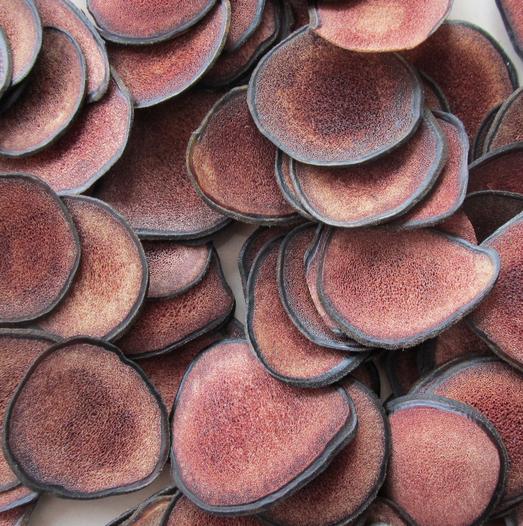
Here in New Zealand there is Antler Velvet for sale all over the place.
Basically you can buy the tincture pre-made or get some antler slices or powder and make your own.
Testosterone DHEA & Androgens in Pine Pollen
This is a breakthrough for me – especially at 43 with andropause about to kick my ass for good.
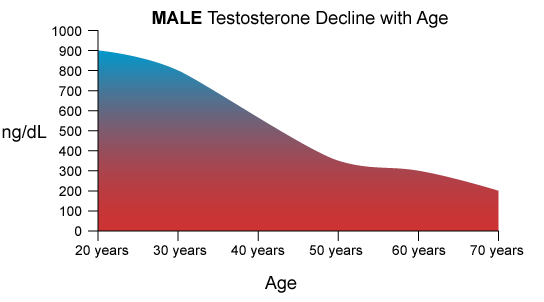
I just found out last week that “Pine Pollen” of all things is chocked full of male sex hormones and is the most potent plant steroid (sterol)
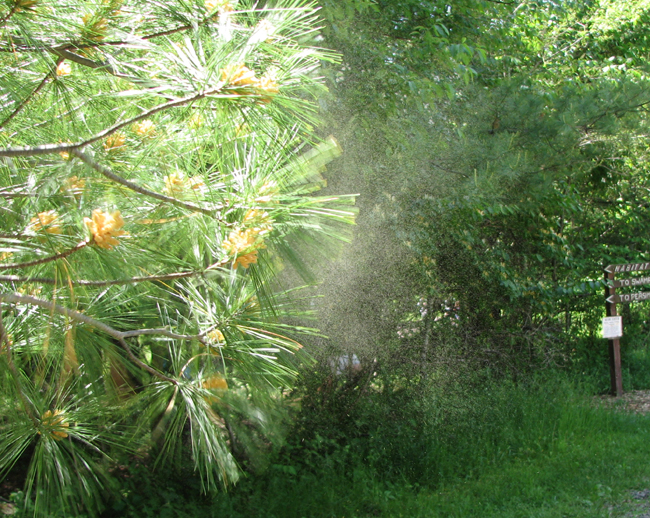
People seem to have a couple of points of confusion :
1. YES IT IS ABSORBED – but you must use a sub-lingual tincture – mix it with alcohol, let it cure for a month, then apply under your tongue 3x per day.
2. Does it work ? What the hell do you think? It contains Testosterone, DHEA, Androsterone, Androstenedione a full spectrum of amino acids, vitamins, minerals and a bunch of other stuff.
YES IT WORKS
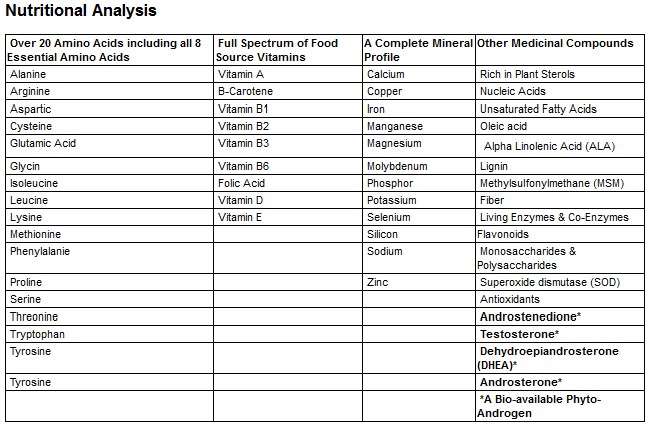
Ok so basically testosterone and DHEA are illegal here in New Zealand & most GP doctors are soft asses that bend over backwards to avoid physical exercise. I wouldn’t even bother with the medical BS required to get on hormone replacement here. Now I don’t have to worry about the quacks approval.

Pine Pollen is legal and abundant and best of all FREE.
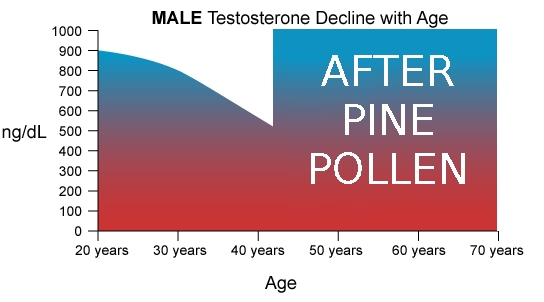
LOL this is what I would like my androgen profile to look like 😉
I must add though that there are a few other herbs you want to take with this stuff. For example as you get older there is a compound SHGB that converts testosterone to oestrogen which increases with age. You will need to take Nettle Root along with your pine pollen to prevent this from happening – otherwise the increased testosterone will turn against you. But the nettle root works so its not going to be a problem.
You can also add Asian and American ginseng, Saw palmetto and tribulus.
Look for the book “Natural Testosterone Solution” for more information.
Training When You are Sick or Injured
In this post I’m talking about minor ailments like colds or flu and minor sprains.
Basically all aerobics and heavy weights should cease for a few days. You want to rest – especially with colds and flu.
Lets talk about the training that you can do.
1. Stretching including isometric stretching
2. Occlusion Training – very light high rep weight training using occlusion
3. If you are into martial arts its still OK to do some Iron Palm or Iron Body style training
That’s it – illness and injury are a time for rest. Don’t fight against recuperation – go with the flow.
Heres the gym I train at
I started training when I was 16 and began using this gym at 19. That’s 23 years I’ve been going to this same gym.
Its the Youthtown gym in Auckland, New Zealand. They have a shooting range, squash courts, basketball, heated pool and the gym. For many years the New Zealand Olympic lifting team used to be based here but they moved on.
I have a bunch of gear at home too like kettlebells, weight vest and random equipment.
Meridians and Nadi’s Finally Vindicated by Modern Science
This is potentially mind blowing staggering news. But rather than explode onto the scene its coming out in trickles. In fact the lid was blown 50 years ago and hushed up in the communist block.
I know that the meridians are not simply the nerves as there are bioelectric characteristics that prove they exist in the exact form described in all of the literature. There are also bioelectric links with embryonics and regenerative medicine. Bonghan Channels put it into a whole different perspective. I will spend some time gathering information and research this.
In the 60’s a North Korean scientist found and mapped microscopic fibres running along the meridians with nodules at the accupoints. The fibres were translucent and 1/5 the width of a hair and often among fascia or lymph so almost impossible to see without correct stain. Stuff that small was observable thousands of years ago as there are hundreds of lenses found that were used for magnification also the Chinese devised other methods such as water magnifiers.
The Bonghan ducts follow the meridians and the spread into a network around organs and mesh with the fascia. Inside the ducts is acidic fluid and “ADULT STEM CELLS”
Ha haaa yes its a distribution system for stem cells. The channels conduct light, heat and are electromagnetically sensitive also. So the meridians or nadis now are proven anatomically although the research is ongoing at present.
Bonghan theory
The Bonghan(BH) system was proposed as an anatomical circulatory organ containing the anatomical structure of the acupuncture meridian system, i.e., anatomical structure of the meridian was found to be a part of a larger organ.
The Bonghan system is consisted of several subsystems; superficial BH system in the skin, intravascular BH system inside large blood and lymphatic vessels, organ-surface BH system on the surfaces of various internal organs and neuro BH system associated with the nervous system.
History
The National Acupunture Meridians Research Institue, led by Bong Han Kim, discovered the “Substance of Kyungrak” which constitues the material foundation of the “Kyungrak theory” in the course of clarifying, on the basis of modern science, this theory which is of great importance in the classics fo Eastern medicine. The report on this discovery was published on August 18, 1961. After making futher research, it was established on November 30, 1963, that the Kyungrak system consists of Bonghan ducts and Bonghan corpuscles and that Bonghan liquor containing a rich amount of deoxyribonucleic acid(DNA) circulates this system. Later the National Acupunture Meridians Research Institue revealed the distribution of the Kyungrak system in the shole body and has since striven to bring to light its essential, biological significance.
On April 15, Bong Han Kim made a report on the results of the reseach at the Kyungrak Society of the Democratic People’s Republic of Korea. According to the report, Kim Bong Han made a thorough observation of the Kyungrak system, regarding it as a system of the circulation of Bonghan liquor. He made particluar efforts to dig donw the systematic structure of the Kyungrak system, the system of the circulation of the Bonghan liquor with a rich content of DNA which had hitherto been known to be existing only in the cell nucleus
Since 2002, Bonghan theory has been studied intenstively by the Biomedical Physics Laboratory in Seoul National University. The first finding was intravascular Bonghan duct in large blood vessels and lymphatic vessels of rabbits, rat, and mice.
Bonghan Ducts and Corpuscles
The component parts of Bonghan system are Bonghan ducts and Bonghan corpuscles. The Bonghan corpuscles and ducts can be classified into several categories, the common structure of which being as follows:
1. The Bonghan duct is a bundle of very fine Bonghan ductules with a diameter of 5 – 15;um. The wall of the Bonghan ductile is composed of endothelial cells as in the case of the blood and lymphatic vessels. But the endothelial cells of the Bonghan ductule are very characteristic. The endothelial cell nucleus is of rod shape and abundant in chromatin and the electronic density is so high that its inner composition is hardly discernible in electron micrographs. The boundary of cytoplasm is not clear and only rod-shape nuclei arranged in and orderly manner on the wall of the Bonghan ductule can be seen. The wall of the Bonghan ductule is very thin; about 0.1 – 0.2 um in electron microscopic observation. Besides, the Bonghan ductule has outer membrane, which is composed of argyrophile fiber and outer membrane cells. The outer membrane cell takes a form similar to smooth muscle and it is presumably the contractile element of the Bonghan ductule. Several ductules are bound by a surrounding membrane.
2. The Bonghan corpuscles are, without exception, linked with Bonghan ducts. The Bonghan corpuscles are formed through the enlargement, ramification and anastomosis of Bonghan ductules. The stroma covering the corpuscles is reticular tissue. This tissue is connected with the outer membrane of the Bonghan ductules and the surrounding membrane of the Bonghan ducts. The Bonghan duct contains basophilic granules, basophilic structures, nucleus-like structures and specific cells. They are related with the reproduction of formed elements
Intravascular Bonghan System
It is a system of Bonghan ducts and corpuscles distributed inside the blood and lymphatic vessels. Inter-linked Bonghan corpuscles and ducts are systematically distributed in all the arteries, veins, lymphatic vessels and in the heart. The inner Bonghan ducts lie freely in the flow of blood and they are ramified together with blood vessels. The Bonghan ducts inside the lymphatic vessel are visible from outside. The structure of the inner bonghan corpuscle with a diameter of 0.1~0.2mm is similar to a small hematopoietic organ.
As in ithe organs producing erythrocyte, leucocyte and lymphocyte, serials of their young cells are found in the net eyes of the reticular structure. The hematopoietic of the inner Bonghan corpuscles has been confirmed through various experiments. But their function is not confined to this. Groups of parenchyma cells of the organ and various other cells, basophilic substance and nucleus-like cells are found in these corpuscles.
Organ Surface Bonghan System
The Bonghan ducts and corpuscles are distributed in a reticular form on the surface of the internal organs. The structure of this Bonghan duct is the same as the intravascular Bonghan ducts and it is linked with the intravascular Bonghan system through the wall of the blood vessel.
see also:
http://books.google.co.nz/books?id=H2vzeIkg-jcC&pg=PA38&dq=bonghan&hl=en&sa=X&ei=bJVNT6z3NcrgmAX5gvX0Dw&ved=0CEwQ6AEwBQ#v=onepage&q=bonghan&f=false”
http://www.springerlink.com/content/978-1-4614-0601-3#section=981555&page=1
http://primosystem.wikispaces.com
There is plenty of biophysics research on this now. I am thinking this is a way for the body to very specifically target tissues with stem cells. Stem cells in the blood are transported willy nilly.
Also as the fibre network is EMF sensitive this may be the natural control mechanism for determining where the stem cells are deposited. Based upon light, and bio electromagnetic tissue polarities etc. We know that pressure etc also affects the meridians and thanks to Bonghan theory we now know exactly what the Qi in the meridians is.
Mitochondria, Anti aging and Liver Boosting Supplements
I’m on a mission to restore my aerobic capacity – damn getting old and feeble
Basically aerobic capacity declines in middle age because of mitochondria damage and decline. In my previous posts I have identified the following supplements to replenish mitochondria…
CoQ10
Quercetin
PQQ
Green tea
Grape Fruit extracts
Reservatrol
Pine bark extract
A cocktail of those antioxidants will blast your mitochondria to the max …
Help the process by adding acetyl-L-carnitine and ALA to transport the fat to the mitochondria and burn your gut off with all that new energy for training.
For anti aging I am going to add Deer Velvet Antler – which contains Igf 1 & 2 and a bunch of other nutrients in concentrated orally absorbable form. I already take colostrum for Igf1.
Here are a couple of lists from other sites for liver support and fat loss nutrients. The liver helps process the fats that mitochondria can indirectly burn for fuel.
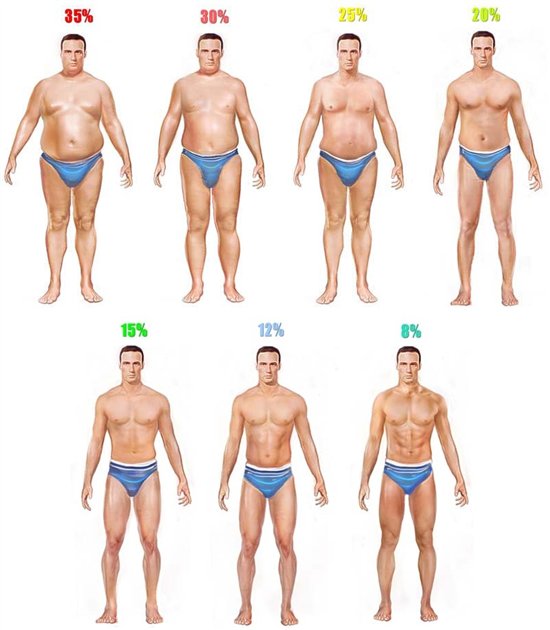
Additional Fat Loss Supplements
A little help from our friends
But sometimes we need a little extra help, and here is where the right nutrients can make a difference. A young cell is characterized by its energy production, just like a young body. As we age, our physical output decreases. To this end, I have looked for methods to increase energy, naturally and safely, at the cellular level. This has led me to a number of nutrients that work in a special way to enhance the loss of body fat, preserve muscle mass and regulate levels of blood sugar and insulin — key attributes of a healthy, young body, regardless of chronological age. They will also promote beautiful, healthy, youthful-looking skin. Here are ten of my favorites:
1. Alpha Lipoic Acid (ALA)
Alpha lipoic acid, often referred to as ‘the universal antioxidant,” is a potent antioxidant and anti-inflammatory found naturally inside of the energy producing portion of the cell known as the mitochondria. Alpha lipoic acid enhances our ability to metabolize food into energy. ALA is a unique antioxidant because it is both fat and water soluble. This means it can go to all parts of the cell, including the lipid (fat) portions such as the cell plasma membrane, as well as the interior of the cell (known as the cytoplasm) where water soluble chemicals reside.
2. DMAE (dimethylaminoethanol)
DMAE is a naturally occurring nutritional substance with powerful anti-inflammatory properties; it is found in fish including wild Alaskan salmon, anchovies and sardines. DMAE is important in the production of neurotransmitters, which are essential in the communication from one nerve to another and between nerves and muscles. Taking DMAE as a supplement will not only improve your cognitive function by improving memory and problem-solving ability, it will help increase skin firmness and muscle tone — important for anyone on a weight loss or anti-aging program.
3. Glutamine
Glutamine is the body’s most abundant amino acid. It plays an important role in keeping the muscles functioning properly and helps reduce muscle deterioration. Glutamine literally drives muscle-building nitrogen into the muscle cell where it is synthesized for growth. It is also converted into glucose when the body needs more energy. When the body is in a highly inflammatory state, it breaks down our muscle tissue to get the extra glutamine needed, resulting in muscle mass loss.
4. Carnitine
Carnitine and its derivative, acetyl L-carnitine, are two of the most important nutrients for weight loss. Carnitine is critical for energy formation and an active metabolism. Carnitine transports the fatty acids from our blood into the cell for this energy production. Thus, for carnitine to have optimum effect, we must have adequate essential fatty acids, such as omega 3’s, present in the diet.
5. Acetyl L-carnitine
Acetyl L-carnitine acts as an antioxidant, a natural anti-inflammatory that enhances the affects of the other antioxidant systems within the body. These anti-inflammatory properties protect the cell plasma membrane (the cell’s first line of defense) and prevent the conversion of arachidonic acid into pro-inflammatory chemicals. Although exercise will naturally increase our levels of acetyl L-carnitine, if we are obese, over thirty or have other health problems, it will not raise them to therapeutic levels, therefore supplementation is necessary.
6. Coenzyme Q – 10
Coenzyme Q-10, also called ubiquinone, is a powerful antioxidant/anti-inflammatory with many benefits for treating and preventing obesity. It acts similarly to acetyl L-carnitine in that it assists in energy production within the mitochondria. CoQ10 enhances the metabolism, giving us greater energy and endurance, a greater ability to lose body fat, preventing the energy decline seen in aging cells. CoQ10 also maximizes the burning of foods for fuel, helping to normalize fats in our blood.
7. Conjugated Linoleic Acid (CLA)
Conjugated linoleic acid is a fatty acid found in many of the foods we eat. At one time, beef and lamb were exceptional sources; however when their diet was changed from grass to grain, levels of CLA dramatically decreased in the meat and dairy products. CLA has powerful antioxidant/anti-inflammatory activity. It decreases body fat, especially in the area of the abdomen and helps block the absorption of fat and sugar into fat cells (adipocytes). It also helps the insulin receptors remain intact, thus increasing insulin sensitivity.
8. Chromium
Because Chromium is an essential nutrient for normal sugar and fat metabolism, it is critical in our effort to control and reduce excess body fat. Chromium supplementation effectively lowers blood sugar and insulin levels and can also increase levels of the ‘good’ HDL cholesterol. This lowers total cholesterol and triglycerides, thus playing a key role in regulating appetite, reducing sugar cravings, and lowering body fat.
9. Gamma Linolenic Acid (GLA)
Gamma linolenic acid is an important omega-6 essential fatty acid. The average American diet causes a deficiency of GLA because of the large amounts of trans fatty acids, sugar, red meats and dairy products. The body rapidly converts GLA into dihomo-gamma-linoleic acid, the precursor of prostaglandin E1, a powerful anti-inflammatory hormone-like compound that helps to regulate inflammation, blood pressure, and many other bodily processes.
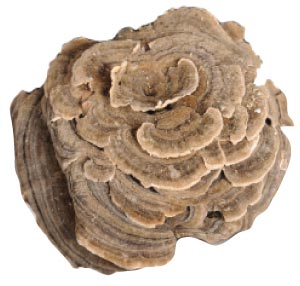
10. Maitake Mushroom Extract
Studies show that maitake mushroom extract enhances insulin sensitivity for controlling blood sugar levels and may serve as a safe and reliable weight loss supplement — even without additional behavior modifications, such as decreased caloric intake and increased exercise. It is established as a powerful tool in preventing a dangerous quartet of metabolic imbalances that increase our risk of cardiovascular disease and diabetes called Metabolic Syndrome. Metabolic Syndrome consists of high blood pressure, elevated levels of insulin, excess weight (especially around the abdomen), and dyslipidemialow, or low levels of HDL (good) cholesterol, high levels of LDL (bad) cholesterol, and high levels of triglycerides.
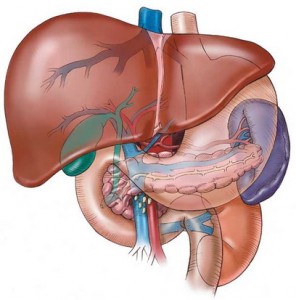
Liver Protection
liver enzymes, a sign of liver breakdown. But if it worsens, you can develop inflammation and scarring in the liver, impairing the liver’s ability to perform its many functions, including the metabolism of proteins and breakdown of toxins.
The same lifestyle changes that help to control diabetes help to improve liver function and stop fatty liver from progressing. And getting your liver functioning properly also improves control of blood sugar, triglycerides and cholesterol. Having a healthy liver can also do a lot to reduce fatigue and brain fog.
Here 10 ways to improve your liver function or recover from fatty liver disease. You can take all of the supplements listed below together. In fact, that’s how they work best. Once your liver enzyme tests are normal again, you may be able to cut back on dosages.
1. If you’re overweight, lose weight, but not too fast. If you’re overweight, losing weight almost always improves liver function. But don’t go to extremes. Rapid weight loss can exacerbate liver inflammation and cause gallstones. Aim to lose about 2 pounds a week.
2. Support your body’s ability to detoxify daily. The liver is the main organ for detoxification. It produces enzymes that break down toxins so that they can be removed. But it can get overwhelmed if it has too much work to do. You can take some of the strain off your liver by avoiding toxins as much as possible (eating organic food, using non-toxic skin care and household products, not smoking, etc.), and by adopting daily habits that support your body’s ability to detoxify. These habits include drinking plenty of water, getting enough soluble fiber and eating cruciferous vegetables. Read more here.
3. Avoid fructose and sucrose. Diets high in these two sugars can induce fatty liver disease, and cause liver inflammation, just like alcohol does. Soda contains lots of fructose. So do some other beverages, like fruit juice “cocktails.” Avoid foods that contain high fructose corn syrup. Limit your intake of all forms of sugar to about 200 calories a day.
4. Take milk thistle. Milk thistle has been used for thousands of years to support liver health and remains one of the most trusted and effective herbs for liver cleansing and protection. In people with fatty liver disease who take milk thistle, researchers noted a significant decline in liver enzyme markers that indicate reversal of the disease, with no serious side effect reported. Milk thistle can reduce inflammation in the liver, help prevent scar tissue formation, and increase the rate of liver cell regeneration. Dosages range from 240 mg twice a day to 200 mg three times a day.
5. Take fish oil. Research shows that fish oil can help prevent the build-up on fat in the liver, improve the action of insulin, reduce triglyceride levels, and reduce inflammation throughout the body. In one study of people with fatty liver, adding fish oil to the diet, improved liver enzyme levels and improved the texture of the liver. Take 2 to 4 grams a day.
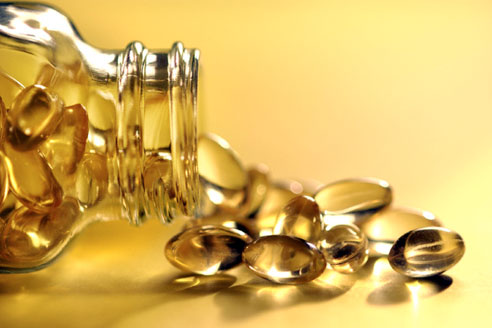
6. Sip green tea or use an extract. Research has shown that green tea extract may keep fatty deposits from building up in the liver. It seems to work by decreasing intestinal fat absorption and altering liver fat metabolism. Drink about three cups of brewed green tea, or take about 375 mg a day of green tea extract.
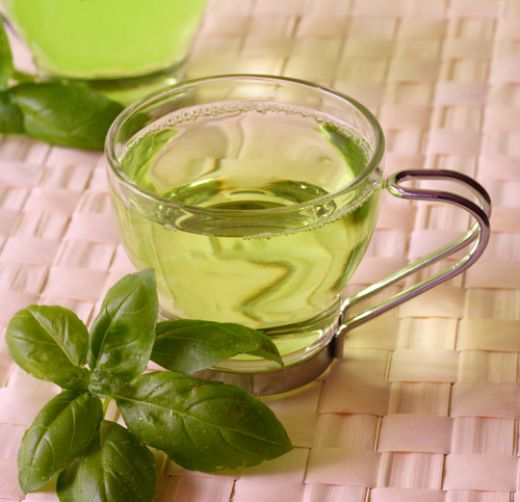
7. Add vitamin E. A multi-center National Institutes of Health (NIH) study found that people with obesity-related nonalcoholic fatty liver disease who took 800 IU a day of vitamin E for about 2 years had an improvement in all aspects of the disease except for the amount of scar tissue in the liver.
8. Use curcumin. Curcumin, a component of turmeric, has liver-protecting properties similar to that of milk thistle. Several studies have shown that curcumin can help protect the liver from chemicals and drugs, and to reverse fatty liver. One study found it was helpful at both treating and preventing the fibrosis—scar tissue formation–associated with fatty liver. It helped to prevent certain cells in the liver, called stellate cells, from producing excessive amounts of collagen, which causes scar tissue formation. Take about 400 mg a day of turmeric extract.
9. Take alpha lipoic acid. This naturally-occurring antioxidant has been shown to decrease fat accumulation in both muscles and in the liver of people with insulin resistance. Alpha lipoic acid seems to work in a number of ways, including improving the use of fat for energy by liver cells. Take 600 to 1,200 m. day.
10. Take acetyl-L-carnitine. Italian researchers have found that acetyl-L-carnitine supplements can improve liver function and the microstructure of liver tissue. In one study, people with inflammed fatty liver who took one gram of acetyl-L-carnitine twice a day for 6 months had lower blood levels of liver enzymes, lower LDL cholesterol, better blood sugar control, less insulin resistance, and reduced markers for inflammation compared to people not taking acetyl-L-carnitine. (Both groups were also on 1,600 calories a day diet.) Acetyl-L-carnitine helps liver function by improving energy production in cells. That also helps to prevent a build-up of toxins in the liver.
Antioxidant Mitochrondria Biogenesis Supplements
I will be stocking up on the exercise mimetic supplements shortly. I decided to purchase these from www.Purebulk.com as they have the full range I require.
Initially I was going to buy green tea extract for the polyphenols and PQQ but I already drink plenty of green and oolong tea – which incedentally increases mitochondria when consumed with vitamin B. However as green tea extract and the ployphenols are highly liver toxic I willl omit this supplement and just continue to drink the tea along with vitamin B.
Here is the list of what I will purchase and it should come to a years supply at least.
Coenzyme Q10 (COQ10) 2x 25 gm – a one year supply – cost $45 – must be melted into coconut oil to avoid spoilage.
Grape Seed/Pine Bark Gel-Caps 600 x 450mg – $54
Grape seed and pine bark extracts act as antioxidants and promote a healthy cardiovascular system. Antioxidants are helpful because they fight and destroy free radical molecules, which can damage cell membranes.
Grape seed extract also contains resveratrol. This chemical is found primarily in the skin and seeds of grapes. Resveratrol is also an antioxidant, providing support for the health of the cardiovascular system.
Grapefruit Seed Extract 250g – cost $24
Refer the the Bill Brinks article in a previous post for information on grapefruit extracts – basically it contains mitochondria biogenesis nutrients
Quercetin Dihydrate P.E. 95% 500g – $100
In total $224 plus shipping for over a years supply. Shipping to New Zealand can run a little steep but it will still be under $300nz I hope – in return I get the mitochondria levels of a fit young man.
High Mitochondria equals high aerobic capacity and Mitochondria also BURN FAT !!!
One last supplement I will add to the stack is Acetyl-L-Carnitine
Produced by the body in the liver and kidneys, L-Carnitine is a nutrient that helps the body turn fat into energy. By transporting fatty acids into the mitochondria, L-Carnitine boosts energy levels, because it stimulates the body’s burning of triglycerides as fuel. These characteristics result in burning fat, increasing energy and improving resistance to muscle fatigue. Not surprisingly, these properties make L-Carnitine a popular supplement with the bodybuilding community – and an ideal way to initiate fatty liver disease regression.
In a double-blind study, Dr. Malaguarnera and colleagues randomized 74 patients with NASH to receive either L-Carnitine (a 1 gram tablet after breakfast and another after dinner) or placebo for 24 weeks. All participants were put on a 1,600-calorie/day diet and a whole-body stretching routine performed three times a week. At the end of the study, those taking the L-Carnitine supplements had considerable improvements in their liver function, glucose plasma level, lipid profile and liver histology. The authors concluded that L-Carnitine and lifestyle changes, including weight loss and exercise, represent viable therapeutic options in NASH.
Lower Core Temperature for 30% Performance Gain
There are currently some good solutions to lower core body temperature while you work out. This can have quite phenomenal performance benefits. The expensive option is CoreControl a special cooling glove developed by Stanford scientists.
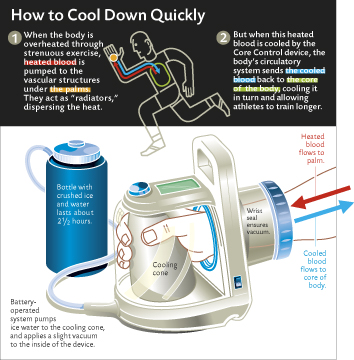
http://www.stanfordalumni.org/news/magazine/2005/julaug/features/cool.html
http://www.avacore.com
These things cost $3000 so for me its not an option. What is an option is a vest, cap and bexrunner palm cooler. It may sound dumb that cooling your hand will affect core body temperature but it does. One athlete went from 200 to over six hundred pullups per workout in a six week period using the expensive cooling glove.

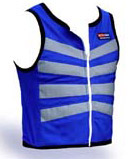
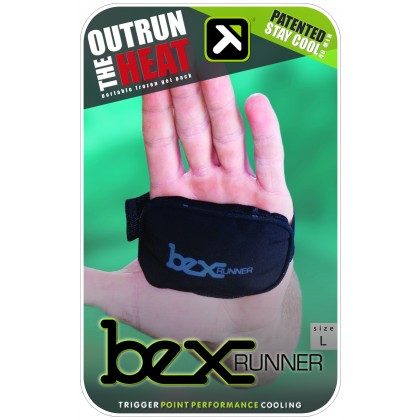
Your face, palms and soles of the feet are the main places that lose body heat. The palms have a strong neurological connection and also regulate body temperature. There are specialised thermo-regulation blood vessels at these body parts.
Heres an article on the CoreControl Glove
BY Eva Ciabattoni
http://www.stanfordalumni.org/news/magazine/2005/julaug/features/cool.html
Robert Weir, head coach of men’s track and field, gets ready for his strength-training regime by loading hundreds of pounds of weights onto both ends of a bar that rests in brackets at shoulder height. Weir moves under the bar, hoists it across his shoulders and does squats. With each repetition, his knees and hips fold until his thighs are parallel to the ground, then straighten—rep after rep with the equivalent of a baby elephant draped around his shoulders.

Like any athlete, Weir is well acquainted with his normal performance range. Like any athlete, Weir looks for an edge. A few years ago, he was intrigued when he heard about a device—that has been called at various times the RTX, Core Control or simply The Glove—invented by a pair of Stanford biologists. Using the device to lower his core body temperature between sets, he was able to lift 495 pounds in four sets of squats instead of his normal two. He usually does squats only on Mondays, but he decided to try a second series a few days later. That Friday, he was able to increase the weight to 545 pounds. “I was surprised the sets felt so good,” he says, but adds that the real test came the following Monday. Weir, 44, expected to see significant performance degradation due to the extra Friday workout. Not only did he not see the decay, he increased weight with every set. The RTX—for rapid thermal exchange—cooling device “is a very serious piece of equipment,” he says. “At my age, you don’t expect to be setting personal bests during workouts.” He trained with the cooling equipment for the 2002 Commonwealth Games, and placed third in the discus. His oldest competitor was 15 years younger.

RTX promises to enhance human performance in applications ranging from sports to medicine to the military. It is the brainchild of biological sciences professor H. Craig Heller and senior research scientist Dennis Grahn, who have spent nearly two decades studying temperature regulation in mammals. Their lab, once devoted to hibernating ground squirrels and marmots, now attracts San Francisco 49er football players, military representatives from the Defense Advanced Research Projects Agency, multiple sclerosis patients and sweating Stanford athletes.
COLD SHOULDER: Grahn and Heller got a chilly reception from some scientists when they first published their findings in 1998.
The fourth floor of Gilbert Biological Sciences Building holds many iterations of Heller and Grahn’s inventions to heat and cool humans. One of the earliest contraptions circulated warm water around an arm encased in a clothes-dryer duct and sealed with neoprene. It was designed to warm patients recovering from anesthesia.

The drugs that render patients unconscious also make them hypothermic. That’s useful because chilled patients bleed less during surgery; but as they start to wake their violent shivering can tear fresh sutures, damage teeth and put extra stress on heart and lungs. It’s important to warm patients quickly after a procedure, and traditionally that’s been done with hot air or blankets. The trouble, Heller explains, is that because the body’s core is still cold, blood flow is pulled away from the skin to preserve internal body heat. Warm blankets heat the skin, but without a ready supply of blood circulating near the skin surface, this warmth is not transferred efficiently to the body’s interior.
Heller and Grahn found that heating only an arm with their device served to warm patients more rapidly than would have been expected via normal heat transfer through the percentage of skin surface being heated. After modifying their design, they realized that they could achieve the same rate of rewarming by encasing just the hand.
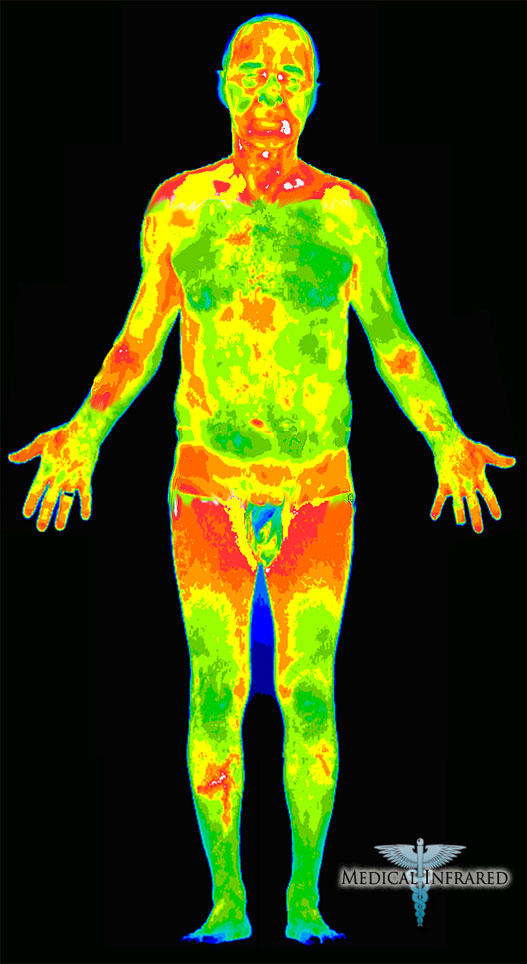
Mammals have specialized blood vessels in their palms and other hairless skin surfaces—ears, nose, cheeks and soles of the feet—that are designed to dissipate heat. (These radiator-like structures—venous plexuses and arteriovenous anastomoses—were described as early as 1858 in Gray’s Anatomy.) By redirecting blood away from the capillaries and into these blood vessels, the body can shed heat quickly. What Heller and Grahn were seeing was the return trip: when externally applied heat shocked open the radiators in the cold palms of anesthesia patients, warmed blood was returned straight to the heart, and the body was reheated from the inside out. Applying a mild vacuum to the hand intensified this effect.
Their finding that heat loss is not uniform across the body was slow to gain acceptance. In the Journal of Applied Physiology, where their research was first published in 1998, Heller and Grahn issued a frosty rejoinder to skeptics: “since we present not just a claim but hard data, it is nice to emphasize that when data do not fit a model it is time to reexamine the model.”
Nigel Holmes
After hearing of their rewarming research, a postdoctoral student in molecular biology and neuroscience approached them to see if the same radiator mechanism could be used to cool the body core. Louise Bitting, PhD ’94, had read that the cooling of cells containing the cystic fibrosis mutation had halted the disease process in those cells. She wanted to study if cooling might work outside a Petri dish. (Bitting died unexpectedly in 1999 at the age of 49.)
A lab technician who was also a body builder, Vinh Cao, volunteered to be the test subject. To generate metabolic body heat, Heller and Grahn had him do sets of pull-ups to exhaustion. He started with a set of 14 pull-ups and soon dropped to eight per set. After 20 minutes, they applied cooling and a vacuum to Cao’s hand. When they asked him to do more pull-ups, they were amazed to see his performance jump back up to 14 pull-ups. To make sure the improvement wasn’t caused by the rest period, they did a study without cooling. Cao did 10 pull-ups.
They continued to study Cao for the next six weeks. If they applied cooling between sets, Cao’s performance held steady in set after set. Without cooling, it decayed. “It was as if he had no fatigue,” Heller recalls. “We saw incredible gains over the next six weeks. He tripled his capacity to 620 pull-ups.” Preventing muscle exhaustion allowed Cao to train harder, leading to rapid gains in muscle strength. Heller and Grahn theorize that more blood, and thus, oxygen, is available to the muscles when the body doesn’t have to route extra blood to the radiators for cooling.
Excited by what they had learned, they arranged a presentation in 2000 to Stanford athletics coaches. Heller remembers the stony faces and crossed arms that greeted them. “It was not a warm welcome. The four or five coaches who showed up didn’t seem to think that a couple of biologists could tell them anything about performance enhancement.” Only Weir agreed to try it. Off campus, the 49ers and Raiders football teams were the earliest adopters—later followed by the University of Miami football team, the NBA’s Milwaukee Bucks and the Manchester United soccer team.
When a battery-operated model of the RTX became available, the Stanford football team started to use it. Head athletic trainer Charlie Miller made an inadvertent breakthrough when one his players came off the field with leg cramps during the third quarter of a game against Boston College early in the ’02-’03 season. “Since cramps tend to recur, a coach has to decide between benching a key player or keeping him on the field and risk another cramp recurring in the middle of play,” Miller explains. In addition to conventional treatments—massage, electrolytes, fluids—Miller had him put his hand into the RTX. To his surprise, the cramp disappeared and the player was able to finish the game. “When the IV fluids worked [to revitalize a player], it wasn’t the minerals or the rehydrating,” he says, “it was because we were invasively cooling the players down. We had noticed that if the IVs were kept on ice, they worked better. Now we know why.”
Miller says the RTX is a competitive advantage because it allows a coach to keep his best players on the field. Because the device is so new, there are no requirements yet for the host team to provide one to the visiting team, as there are for other amenities.
Ever seeking a competitive edge, athletes began paying regular visits to the fourth floor of Gilbert, causing one of the staff to remark that the hallways had gotten smaller. A former NFL player told Grahn, “This replaces the Juice,” referring to steroids. Weirdly, cooling does mimic steroids in the way it allows an athlete to recover from intense exertion quickly, allowing someone to do more work in a shorter period of time. But cooling doesn’t result in shriveled gonads or ’roid rage.
Cooling mimics steroids in the way it allows an athlete to recover from intense exertion quickly. But cooling doesn’t result in shriveled gonads or ’roid rage.
Critics might worry that cooling masks the body’s signals to stop. In fact, lab data show that athletes who train with cooling perform better in all kinds of conditions—even competitions when cooling is un-available. Heller says removing heat from the body is no different from giving it a drink of water in response to thirst. Asked whether training with cooling might lead to overuse injuries, Weir shakes his head. “It doesn’t allow you to do work you couldn’t ordinarily do. It allows you to recover faster.”
Meanwhile, researchers continue to investigate therapeutic uses for cooling. One exciting area of research involves multiple sclerosis, a disease where even a 1/2-degree Celsius rise in core body temperature can lead to rapid and dramatic physical and cognitive decline. (MS sufferers say the sudden enervation feels as though a switch was flipped.) The disease destroys portions of the fatty myelin sheath that insulates nerves; heat disrupts the electric impulses traveling along the frayed nerves. Retaining strength—key to staying out of a wheelchair—is a significant challenge for MS patients, for whom fatigue can lead to a spiral of debility.
Jim Seaton, a management consultant who lives in Washington, D.C., has MS. Once a top runner and avid hiker, he has to be cautious about exertion. He pushed himself too far once and had to crawl back to his car in the parking lot; recovery to his baseline level of functioning took two days. Seaton, after hearing a radio report about cooling athletes, arranged to try the RTX to see if it reduced the fatigue that resulted when his body warmed up. Using the RTX, he can cool to his resting state in 10 to 15 minutes—and then continue to hike. The RTX isn’t exactly convenient: the $4,000 unit weighs 12 pounds and has to be reloaded with ice every 2 1/2 hours. But owning one changed his life. “I’m already planning trips to the museum [and] to Europe that I would have thought thrice about before.”
At their boneyard of core-cooling machines in the Gilbert building, Heller and Grahn describe the difficulty in perfecting the design for a functional, portable RTX. There’s the coffeepot-shaped version. The $400,000 version by a name-brand design firm that really never worked. The version constructed in a size-10 boot that, once loaded with tubes and a cooling surface, wouldn’t fit on even a size-5 foot. Grahn’s latest homemade version features soft vinyl against the hand instead of metal. One design challenge is obvious—how to create a vacuum-bearing glove flexible enough so that its wearers can use their hands, not just sit cooling their palms.
Variable temperature control is another desirable feature. When a hot body core issues a command to open the radiators and dump heat, the palm can override that command and order the radiators to shut down based on local conditions, i.e., if the palm touches a cold surface. This was borne out in February when Grahn flew to Alaska to observe dog teams competing in the Iditarod. Temperatures rose to 46 degrees in Anchorage—downright tropical for the huskies. Grahn watched sled dogs through an infrared camera—and saw snouts and ears lit up like headlamps, indicating that the dogs were shedding excess body heat. But the cameras showed no heat loss through the dogs’ feet. Snow under their paws prevented those radiators from opening. Heller and Grahn have found in the lab that the temperature under which the radiators shut down in humans is highly individual.
Heller and Grahn have received a series of patents through Stanford’s Office of Technology Licensing, which will share in any royalties. They are founders and major stakeholders in AVAcore Technologies, a Michigan firm charged with making the RTX commercially viable. (The company moved from the Bay Area to Ann Arbor in 2003 to take advantage of engineers laid off from the automotive industry.) “It’s hard to build a compressor small enough to be useful in portable situations,” says Ronald Piasecki, chief executive officer of AVAcore. “Eventually nanotech may play a role in accomplishing our engineering goals.”
Piasecki has overseen improvements to the RTX manufacturing process, reducing the cost and time to build each Core Control machine. “Clearly, the athletic market is the low-hanging fruit,” he says of the 100 units sold so far. “But this fall we’re starting a study of MS patients in conjunction with the University of Michigan neurology department.”
Heller remains confident that the technology can be brought to wide markets. “There are many applications of both heating and cooling,” he says. “Firefighters, soldiers in full gear in the Iraq desert, stroke victims [where cooling patients can prevent further damage], cancer patients [where heating can increase effectiveness of chemotherapy drugs], cystic fibrosis, heatstroke victims”—all are potential beneficiaries of RTX.

